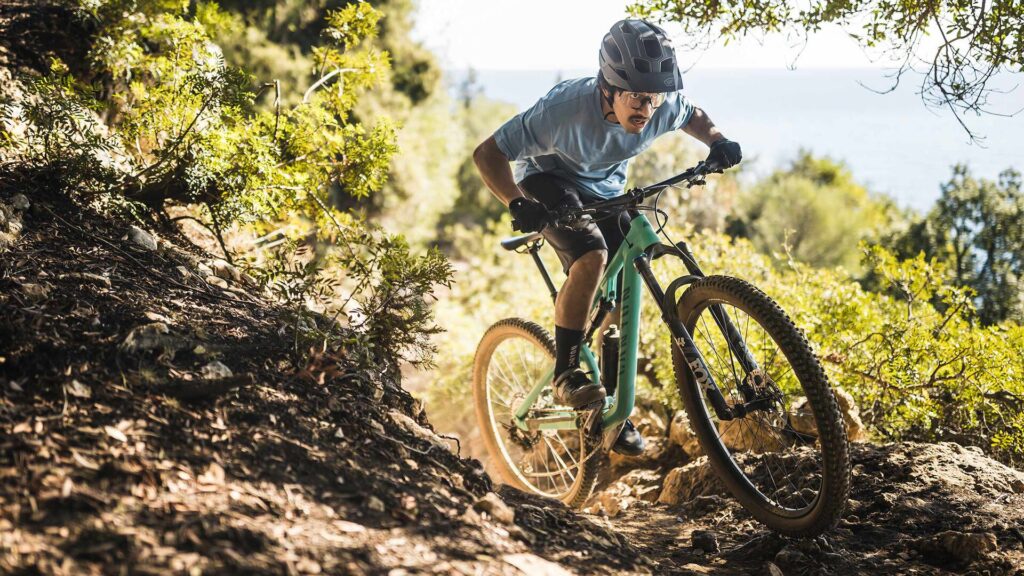
Winter riding can be a thrilling and challenging experience for mountain bikers. Riding in snowy and icy conditions requires special considerations when it comes to choosing the right mountain bike. With the right equipment and preparation, you can enjoy the winter wonderland while exploring trails and staying active. In this article, we will discuss the key factors to consider when selecting a mountain bike for winter riding.
Frame Material
The frame material of your mountain bike is an important consideration for winter riding. Aluminum and steel frames are commonly used in mountain bikes and are suitable for winter conditions. Both materials offer durability and strength to withstand the rigors of winter riding. However, aluminum frames tend to be lighter and more resistant to corrosion, which can be beneficial in wet and snowy conditions. Steel frames, on the other hand, provide a smoother ride and better shock absorption but can be heavier. Consider your preferences and riding style to choose the frame material that suits your needs.
Tire Selection
Choosing the right tires for winter riding is crucial for traction and control. Look for mountain bike tires with aggressive tread patterns and wider widths. Wide tires with deep knobs provide better grip and traction on snowy, icy, and muddy terrains. Consider opting for tubeless tires, which allow you to run lower tire pressure without the risk of pinch flats. Lowering the tire pressure improves traction on slippery surfaces. Additionally, studded tires are an excellent option for extreme winter conditions with ice-covered trails. Studded tires have metal or carbide studs embedded in the tread to enhance grip on icy surfaces.
Suspension
The suspension system of your mountain bike plays a role in your comfort and control during winter riding. Full-suspension bikes provide better traction and control on uneven and bumpy winter trails. The suspension system helps absorb shocks and impacts, allowing for better maneuverability. However, the added weight and maintenance requirements of a full-suspension bike may not be necessary for all winter riding conditions. If you predominantly ride on groomed trails or less technical terrain, a hardtail mountain bike with front suspension can be a suitable and lighter option.
Braking System
Braking is crucial for safe and controlled riding in winter conditions. Look for mountain bikes with high-quality disc brakes, as they provide better stopping power and modulation compared to rim brakes. Disc brakes perform consistently regardless of weather conditions, including wet and icy conditions. Consider opting for hydraulic disc brakes, as they offer better performance and require less effort to engage. Regularly maintain your brakes by checking the brake pads for wear and ensuring the brake system is properly adjusted.
Drivetrain
The drivetrain of your mountain bike should be reliable and capable of handling winter riding conditions. Winter riding often involves encountering mud, slush, and snow, which can affect the performance of the drivetrain. Consider a mountain bike with a drivetrain that is less susceptible to clogging and damage from winter elements. Single-speed or internally geared hub systems can be a good choice as they have fewer exposed components that can become clogged with snow and ice. Additionally, regularly clean and lubricate the drivetrain to prevent rust and ensure smooth shifting.
Frame Clearance
When choosing a mountain bike for winter riding, consider the frame clearance for wider tires. Winter riding requires wider tires to provide better traction on slippery surfaces. Look for a mountain bike frame with adequate tire clearance to accommodate the wider tires you plan to use. Frame clearance is particularly important for riding in deep snow or slush, as it prevents the tires from getting clogged and impeding your progress. Ensure that the mountain bike you choose can accommodate the tire width you need for winter riding conditions.
Bike Protection
Winter riding exposes your mountain bike to harsh elements such as snow, slush, and road salt. It’s important to protect your bike from corrosion and damage. Look for a mountain bike with a durable frame finish or consider applying a protective coating to the frame. Regularly clean your bike after each winter ride, removing any salt or debris that may have accumulated. Additionally, consider using frame protection stickers or tape to prevent scratches and wear from winter riding conditions.
Layering Accessories
In addition to selecting the right mountain bike, it’s important to equip yourself with the proper accessories for winter riding. Layering is key to staying warm and comfortable during cold rides. Consider investing in thermal base layers, insulated jackets, waterproof pants, and shoe covers to protect yourself from the cold and wet conditions. Don’t forget to wear appropriate gloves and headwear to protect your extremities from frostbite.

